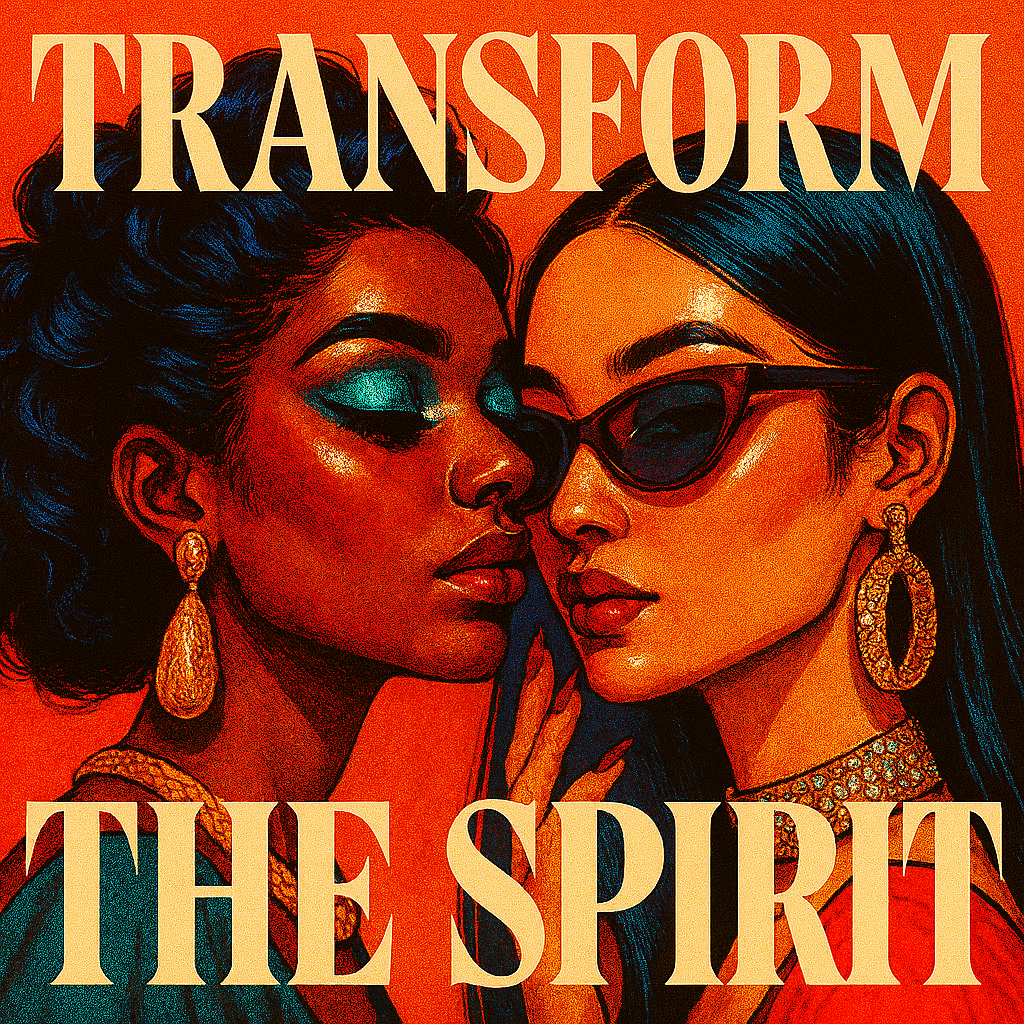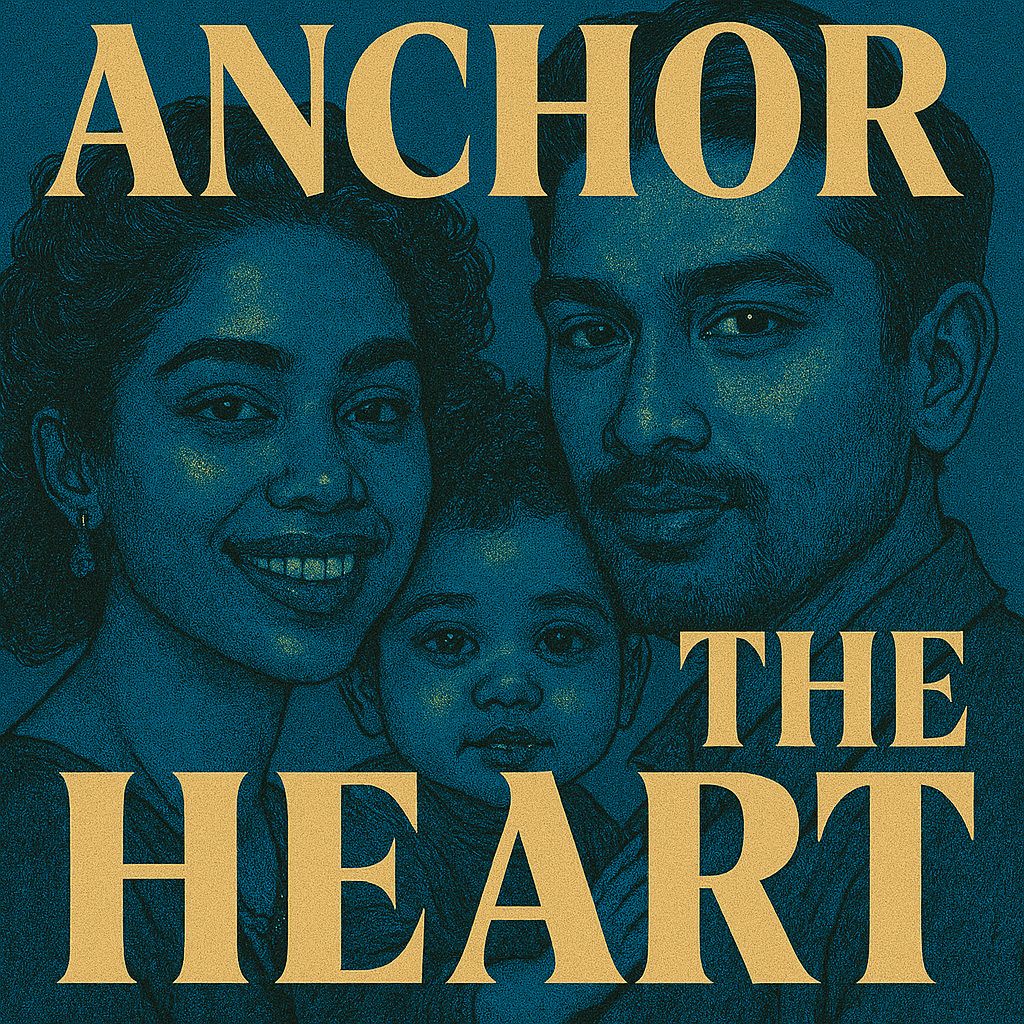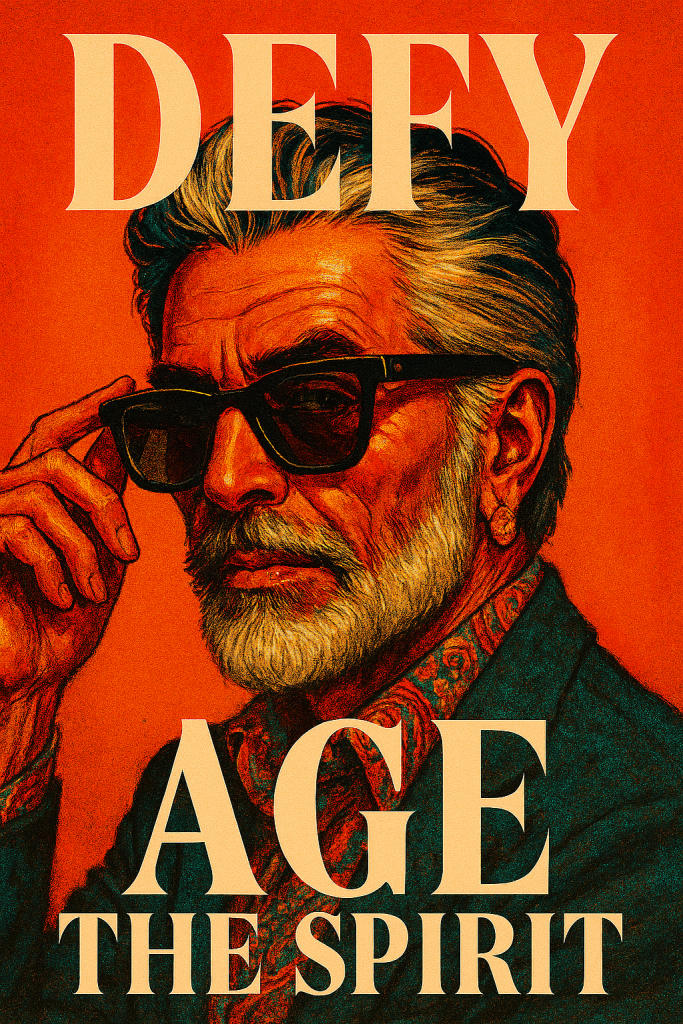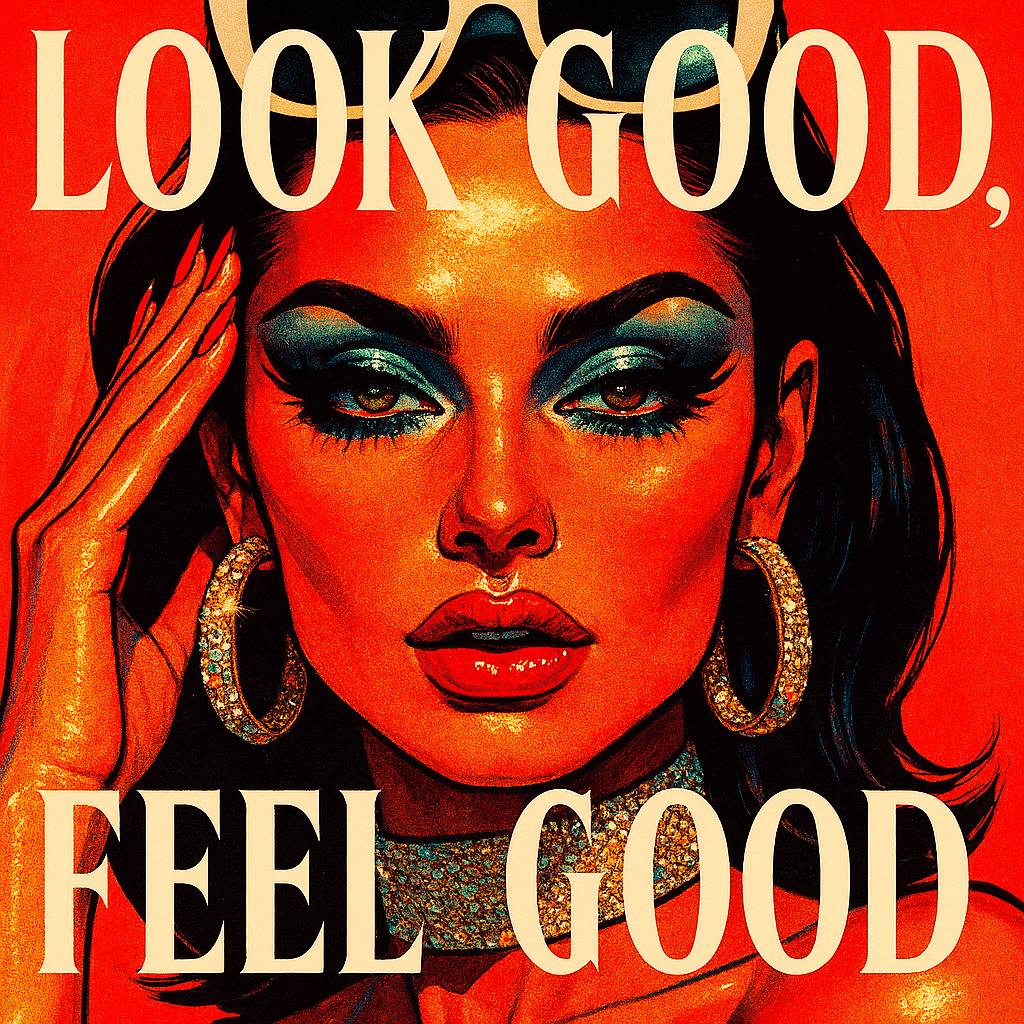
Why We Need To Look Super Good
Understanding the Psychological Drivers Behind Appearance
How Self-Image Shapes Behavior – Status – and Emotional Health
Looking good is not a superficial indulgence. It is a psychological mechanism that helps us navigate identity, social belonging, and emotional regulation. From early childhood, we learn that appearance influences how others respond to us—whether with warmth, caution, admiration, or dismissal. These responses shape our internal narrative and affect how we see ourselves.
The desire to look good is not rooted in vanity. It is a symbolic strategy for survival, acceptance, and influence. Appearance becomes a language we use to communicate intention, mood, and social alignment. It helps us feel seen, understood, and safe in environments that often feel unpredictable.
Evolution and Symbolic Survival
The human brain is wired to respond to visual cues. Long before language developed, appearance served as a primary tool for assessing health, strength, and reproductive fitness. Symmetry, grooming, and posture were not just aesthetic choices—they were survival signals. These traits helped early humans identify allies, avoid threats, and select mates.
Over time, appearance evolved into a symbolic system. It began to represent not just biology, but intention, status, and emotional state. In modern environments, we still rely on these cues—often unconsciously. A clean, composed look signals readiness and reliability. Disheveled or erratic presentation may trigger caution or concern. Looking good helps us navigate these instinctive judgments with precision.
Appearance also acts as a form of psychological armor. In uncertain or competitive settings, it provides a sense of control and protection. It allows us to project strength even when we feel vulnerable. The drive to look good is not optional—it is adaptive. It helps us survive symbolically in complex social ecosystems.
Self-Image and Emotional Regulation
Self-image is the internal mirror that reflects how we feel about ourselves. When we look good, we often experience a sense of emotional stability and control. Appearance becomes a tool for regulating mood, anxiety, and self-doubt. It offers structure in moments of chaos and clarity in times of confusion.
Grooming rituals serve as emotional anchors. They help us transition between psychological states—preparing for work, winding down, or entering social spaces. These rituals are not trivial. They reinforce agency and reinforce boundaries between roles. Looking good becomes a daily act of emotional hygiene.
Positive feedback from others further strengthens self-image. Compliments, eye contact, and inclusion validate our efforts and reinforce our sense of worth. This feedback loop shapes resilience and confidence. Appearance is not just external—it is a stabilizing force within. It helps us regulate emotions through symbolic clarity and intentional presentation.
Social Signaling and Group Dynamics
Appearance is a form of social signaling that influences how we are perceived and treated. Humans use visual cues to assess hierarchy, affiliation, and trustworthiness. Looking good helps us navigate these dynamics with strategic precision. It signals competence, emotional stability, and cultural fluency.
In group settings, appearance affects inclusion and influence. People who present themselves with care are often perceived as leaders or reliable collaborators. This perception shapes decision-making, group cohesion, and emotional safety. Appearance becomes a silent contributor to social architecture.
It also communicates alignment with shared values. Whether through dress codes, grooming styles, or symbolic accessories, we signal our place within a community. Looking good is not just personal—it is relational. It affects how we connect, collaborate, and contribute. Social signaling through appearance is a core part of human interaction.
Identity Construction and Role Play
Appearance is central to how we construct and perform identity. Humans use clothing, grooming, and posture to express who they are and who they aspire to be. These choices reflect values, emotional states, and social roles. Looking good helps us embody these roles with clarity and confidence.
Each look carries symbolic weight. A tailored suit may signal professionalism, while a bold accessory may express creativity. These visual cues help us navigate different environments and expectations. Appearance becomes a canvas for psychological storytelling.
It also allows for fluidity. We shift between roles—parent, partner, professional, artist—using appearance as a bridge. This symbolic layering strengthens emotional coherence and adaptability. Looking good is not static. It is performative, intentional, and deeply personal. Identity is shaped by how we look and how we are seen.

Status – Power – and Influence
Looking good is often linked to perceived status and influence. Humans instinctively associate polished appearance with competence, authority, and control. This bias affects hiring decisions, leadership selection, and social mobility. Appearance becomes a shortcut for assessing power and credibility.
People who look confident are more likely to be trusted, even before they speak. This trust translates into opportunities, access, and influence across personal and professional domains. Looking good can elevate one’s position in competitive environments where first impressions matter.
It signals readiness, discipline, and strategic awareness. In high-stakes settings, appearance becomes a form of leverage that shapes outcomes. It helps individuals assert control, command respect, and navigate complex hierarchies. The psychology of power is deeply visual, and appearance is its most immediate currency. Looking good is not just about aesthetics—it is about symbolic dominance and emotional clarity.
Ritual – Routine – and Psychological Anchoring
Grooming and dressing are more than habits. They are rituals that anchor the mind and body in structure. In a world that often feels chaotic, these routines offer predictability and control. They help regulate time, emotion, and intention through symbolic repetition.
Looking good becomes a daily act of self-definition. It marks transitions between roles—professional, personal, creative, or restorative. These visual shifts are not superficial. They help the brain compartmentalize tasks and emotional states. Dressing for work signals readiness and focus. Changing into casual wear marks decompression and emotional release.
Appearance rituals also reinforce boundaries. They help us protect our energy, define our space, and assert our values. When we look good, we feel more prepared to face uncertainty. These rituals become emotional scaffolding, supporting resilience and clarity. Looking good is not just a result—it is a process of psychological anchoring.
Recovery – Resilience – and Visual Healing
Appearance plays a powerful role in psychological recovery. After illness, trauma, or emotional upheaval, looking good can help restore a sense of normalcy. It becomes a visual affirmation of progress and strength. Grooming and dressing offer tactile rituals that ground the body and soothe the mind.
These acts help individuals reconnect with their identity. They reclaim agency in moments that feel disempowering. Looking good during recovery is not about impressing others. It is about rebuilding emotional coherence. Appearance signals that healing is underway, even when internal wounds remain.
It also affects how others respond. A composed appearance invites empathy, respect, and support. This feedback reinforces emotional safety and social inclusion. Looking good becomes a bridge between internal healing and external affirmation. It helps individuals re-enter social spaces with dignity and confidence. Appearance is a form of visual resilience.
Cultural Codes – Aesthetic Norms – and Symbolic Belonging
Every culture has aesthetic norms that shape how people present themselves. These norms are not arbitrary. They reflect shared values, emotional priorities, and symbolic traditions. Looking good within a cultural context means aligning with these visual codes while expressing personal nuance.
Appearance becomes a form of cultural fluency. It allows individuals to navigate diverse environments with confidence. Whether through dress, grooming, or symbolic accessories, people signal their place within a community. These signals foster inclusion, trust, and emotional safety.
At the same time, appearance can challenge norms. It becomes a tool for rebellion, innovation, or redefinition. Looking good is not just about fitting in—it is about choosing how to belong. Cultural codes shape the emotional language of appearance. They influence how we decorate, groom, and present ourselves in public and private spaces.
Symbolic Memory – Emotional Triggers – and Visual Recall
Appearance is deeply tied to memory and emotional recall. Specific looks can trigger past experiences, relationships, and psychological states. A scent, a fabric, or a color can evoke joy, grief, or nostalgia. Looking good often involves curating these triggers to shape experience.
People use appearance to revisit past selves. They honor milestones, relationships, and transitions through visual storytelling. This recall reinforces identity and emotional continuity. Appearance becomes a living archive of symbolic memory.
It also helps shape the present. By choosing how to look, individuals influence how they feel and how they are perceived. Looking good is not just about aesthetics—it is about emotional resonance. It connects embodiment to memory in powerful ways. Appearance becomes a tool for emotional navigation.
Performance – Precision – and Visual Authority
In high-pressure environments, appearance enhances performance. It reinforces precision, focus, and emotional discipline. Looking good signals readiness to engage, solve, and lead. It becomes a psychological tool for control and clarity.
People who dress with intention often report higher levels of task efficiency. Appearance helps reduce distractions and align internal goals with external presentation. It becomes a form of visual commitment to excellence. Looking good also influences how others perceive competence and reliability.
This perception affects collaboration, negotiation, and leadership dynamics. Appearance becomes a silent partner in performance. It shapes outcomes before words are spoken. Looking good is not just about being seen—it is about being trusted. Precision in appearance reflects precision in thought and action.
Emotional Safety – Trust – and Visual Warmth
Looking good helps create emotional safety in social environments. Humans instinctively respond to visual cues that signal openness, stability, and approachability. A composed appearance invites trust, while erratic or neglected presentation may trigger caution. These responses are not superficial—they are emotional filters shaped by experience and survival instincts.
In professional settings, looking good helps reduce friction and build rapport. It signals that we respect the space, the people, and the moment. In personal relationships, appearance becomes a form of emotional generosity. It shows that we care enough to prepare, to present, and to engage with intention. This visual warmth fosters connection and psychological ease.
Appearance also helps others feel safe around us. It reduces ambiguity and reinforces emotional boundaries. Looking good is not about perfection—it’s about clarity. It helps us communicate emotional availability and social readiness. In uncertain environments, appearance becomes a stabilizing force. It creates space for trust to grow.

Symbolic Transitions – Thresholds – and Visual Markers
Appearance plays a key role in marking symbolic transitions. Humans use visual changes to signal shifts in identity, status, and emotional state. From graduation robes to wedding attire, these markers help us move through thresholds with clarity and ritual. They reinforce the emotional significance of change.
Looking good during transitions is not just ceremonial—it’s psychological. It helps individuals embody new roles and release old ones. Appearance becomes a visual contract between past and future. It allows us to honor what was while stepping into what’s next. These symbolic shifts are essential for emotional integration.
Even subtle changes—like a haircut or wardrobe update—can signal internal transformation. They help us process grief, celebrate growth, or reclaim agency. Looking good becomes a tool for emotional navigation. It helps us move through life’s chapters with dignity and coherence. Appearance is a bridge between identity and evolution.
Table – Appearance and Symbolic Transitions
| Life Transition | Appearance Shift | Emotional Signal | Social Response | Symbolic Meaning |
|---|---|---|---|---|
| Graduation | Formal and elevated | Achievement and pride | Recognition and respect | Completion and emergence |
| Marriage | Coordinated and ceremonial | Unity and commitment | Celebration and bonding | Partnership and ritual |
| Career change | Refined and intentional | Renewal and ambition | Curiosity and support | Reinvention and clarity |
| Parenthood | Practical and nurturing | Grounding and care | Empathy and inclusion | Role expansion |
| Personal rebirth | Bold and expressive | Liberation and strength | Admiration and intrigue | Emotional reclamation |
Visual Boundaries – Consent – and Emotional Autonomy
Appearance helps define visual boundaries and assert emotional autonomy. In crowded or high-stimulus environments, looking good becomes a way to control how we are approached. It signals what we are open to—and what we are protecting. These boundaries are essential for psychological safety.
People use appearance to manage attention, interaction, and emotional labor. A polished look may invite collaboration, while a minimalist style may signal introspection. These choices are not random—they are strategic. They help individuals navigate social demands with clarity and control.
Looking good also reinforces consent. It allows us to choose how we are seen, interpreted, and engaged. Appearance becomes a tool for emotional sovereignty. It helps us protect our energy and assert our values. In a world of constant visibility, looking good is a form of self-defense. It affirms our right to define our own narrative.
Table – Appearance and Emotional Boundaries
| Visual Strategy | Emotional Intent | Social Effect | Boundary Type | Symbolic Function |
|---|---|---|---|---|
| Minimalist styling | Emotional retreat | Reduced engagement | Protective | Self-preservation |
| Structured grooming | Focus and discipline | Increased respect | Assertive | Role clarity |
| Expressive fashion | Emotional openness | Invited curiosity | Relational | Identity expansion |
| Neutral tones | Emotional neutrality | Reduced projection | Passive | Energy conservation |
| Cultural attire | Heritage affirmation | Contextual recognition | Symbolic | Belonging and pride |
Visual Intelligence – Symbolic Fluency – and Emotional Literacy
Looking good reflects visual intelligence—the ability to communicate emotion, intention, and identity through appearance. This fluency is not about fashion trends. It is about symbolic literacy. People who understand how to use appearance strategically often navigate social environments with greater ease and impact.
Visual intelligence involves knowing what signals to send and when. It means choosing colors, textures, and silhouettes that align with emotional goals. It also means reading others’ appearance cues with empathy and precision. This literacy strengthens relationships and reduces miscommunication.
Looking good becomes a form of emotional storytelling. It allows us to express complexity without words. It helps us connect across cultures, generations, and contexts. Appearance is not just decoration—it is dialogue. It reflects our emotional intelligence and our symbolic awareness. Looking good is a language we all speak, whether we realize it or not.
Emotional Calibration – Mood Shaping – and Visual Feedback
Looking good helps calibrate emotional states through visual feedback. When we see ourselves reflected with clarity and intention, it reinforces emotional stability. Appearance becomes a mirror for mood—both shaping and reflecting how we feel. This feedback loop strengthens self-awareness and emotional literacy.
People often use appearance to shift internal states. Dressing with care can elevate confidence, reduce anxiety, or signal readiness. These shifts are not cosmetic—they are cognitive. Appearance acts as a behavioral cue, prompting the brain to align with the chosen emotional tone. It helps us move from reactive to intentional.
Visual feedback also influences how others respond, creating a social echo. When we look composed, others treat us with respect and attentiveness. This response reinforces our emotional calibration. Looking good becomes a tool for emotional tuning. It helps us manage transitions, interactions, and internal shifts with symbolic precision.
Table – Appearance and Emotional Calibration Strategies
| Appearance Cue | Emotional Goal | Internal Effect | External Response | Symbolic Outcome |
|---|---|---|---|---|
| Bright colors | Energize and uplift | Increased optimism | Warmth and engagement | Emotional activation |
| Monochrome palette | Focus and discipline | Reduced distraction | Respect and clarity | Cognitive alignment |
| Soft textures | Soothe and comfort | Lowered anxiety | Gentleness and empathy | Emotional grounding |
| Structured layers | Assert control | Elevated confidence | Authority and trust | Boundary reinforcement |
| Cultural motifs | Affirm identity | Emotional pride | Recognition and inclusion | Symbolic belonging |
Environmental Adaptation – Contextual Intelligence – and Visual Strategy
Looking good is context-sensitive. Humans adapt their appearance based on environment, audience, and emotional goals. This adaptation reflects visual intelligence—the ability to read a space and respond symbolically. Appearance becomes a strategy for emotional and social alignment.
In formal settings, structured presentation signals competence and respect. In creative zones, expressive styling invites curiosity and collaboration. These shifts are not superficial—they are strategic. They help individuals navigate expectations while preserving authenticity. Looking good becomes a form of environmental fluency.
Contextual intelligence also involves knowing when to simplify, when to amplify, and when to blend. Appearance helps us modulate visibility, influence, and emotional tone. It allows us to move through diverse environments with grace and precision. Looking good is not fixed—it is adaptive. It reflects our ability to read and respond to the world.
Table – Appearance Across Environmental Contexts
| Environment | Visual Strategy | Emotional Tone | Social Signal | Symbolic Function |
|---|---|---|---|---|
| Corporate office | Structured and neutral | Focus and professionalism | Reliability and readiness | Role embodiment |
| Art studio | Bold and layered | Freedom and curiosity | Creativity and openness | Identity expansion |
| Wellness retreat | Soft and minimal | Calm and introspection | Safety and reflection | Emotional reset |
| Public speaking | Clean and elevated | Confidence and clarity | Authority and engagement | Symbolic leadership |
| Community event | Cultural and vibrant | Belonging and celebration | Inclusion and pride | Social bonding |
Visual Empathy – Emotional Signaling – and Relational Depth
Appearance is a form of emotional signaling that fosters empathy and relational depth. Humans respond to visual cues that reflect emotional availability, vulnerability, and intention. Looking good helps us communicate these cues with nuance and clarity. It becomes a bridge between self and other.
Visual empathy involves choosing appearance elements that invite connection. Soft tones, open posture, and expressive styling signal emotional openness. These choices help others feel safe, seen, and understood. Appearance becomes a relational tool, shaping how we engage and how we are received.
It also helps us read others with greater sensitivity. By observing appearance, we can detect mood, boundaries, and emotional needs. This awareness strengthens communication and reduces conflict. Looking good is not just about self-expression—it is about emotional attunement. It deepens relational intelligence and symbolic trust.

Integration – Symbolic Coherence – and Emotional Alignment
Looking good is most powerful when it reflects symbolic coherence. This means that appearance aligns with values, emotions, and intentions. When our visual presentation matches our internal state, we feel integrated and emotionally whole. Appearance becomes a reflection of psychological alignment.
Symbolic coherence reduces cognitive dissonance. It helps us move through the world with clarity and confidence. People who maintain consistent visual rituals often report higher levels of emotional stability. Looking good reinforces this stability by affirming identity and purpose.
It also strengthens trust—both internally and externally. When others see us as we see ourselves, relational clarity improves. Appearance becomes a tool for emotional integration. It helps us align our inner world with our outer expression. Looking good is not just about being admired—it is about being understood.
Conclusion
The need to look good is not shallow—it is symbolic, strategic, and deeply psychological. Appearance influences how we feel, how we connect, and how we navigate the world. It reflects emotional intelligence, cultural fluency, and relational depth. Looking good helps us regulate mood, assert boundaries, and mark transitions.
It is a language we use to express identity, intention, and emotional state. From ritual to recovery, from performance to empathy, appearance shapes every layer of human experience. It is not just decoration—it is declaration. Looking good affirms our place in the world and strengthens our emotional architecture.
This post has explored the mirror mind in full editorial depth. Each section is designed for modular reuse, symbolic clarity, and emotional resonance. Whether you’re building content, designing rituals, or navigating change, appearance remains a powerful psychological tool. Use it wisely—and with intention.
Join the Discussion
How does appearance shape your emotional landscape? Have you used visual rituals to navigate change or reclaim agency? What symbolic elements do you rely on to feel grounded and seen?
#PsychologyOfAppearance #EmotionalDesign #SymbolicClarity #VisualIntelligence #IdentityThroughStyle #ModularEditorial #EmotionalArchitecture #AppearanceMatters #SelfImageTools #SymbolicSurvival #VisualEmpathy #ResilientDesign





1 thought on “The Appearance And Why We Need To Look Super Good”